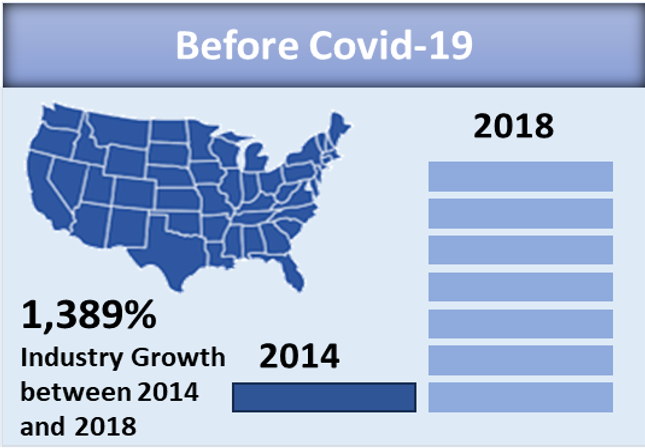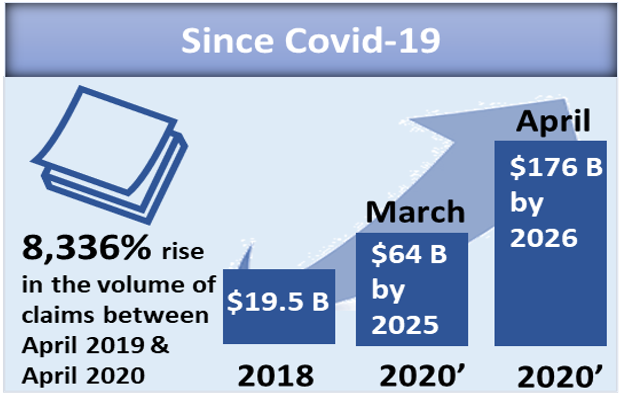Healthcare Smart Card Reader Market Seen Soaring 15.1% Growth to Reach USD 956 Million by 2030, Projects Univdatos Market Insights
- Vikas Kumar
- November 15, 2023
- HEALTHCARE, NEWS
- Healthcare Smart Card Reader, Healthcare Smart Card Reader Market, Healthcare Smart Card Reader Market analysis, Healthcare Smart Card Reader Market forecast, Healthcare Smart Card Reader Market growth, Healthcare Smart Card Reader Market share, Healthcare Smart Card Reader Market trends
- 0 Comments
Key Highlights of the Report:
- The widespread adoption of EHR systems has driven the demand for secure access control solutions like smart card readers. These readers help healthcare professionals securely authenticate themselves to access and update patient records.
- As of 2020, 89.7% of office-based physicians in the United States had adopted certified EHR systems, according to the Office of the National Coordinator for Health Information Technology (ONC).
- In 2021, Teladoc Health, a prominent telemedicine provider, reported a 145% increase in total visits compared to 2020, highlighting the continued expansion of telehealth services.
- The European Union introduced the European Health Data Space (EHDS) project in 2021, emphasizing secure and interoperable health data access and sharing, aligning with the need for robust data security in healthcare.
According to a new report by Univdatos Market Insights, the Healthcare Smart Card Reader Market, is expected to reach USD 956.05 Million in 2030 by growing at a CAGR of 15.1%. The healthcare smart card reader market involves the manufacturing, distribution, and adoption of smart card reader devices specifically designed for use in the healthcare industry. These devices are used to read smart cards, which store and provide secure access to sensitive patient information, electronic health records (EHRs), and other healthcare-related data. Smart card readers in healthcare settings are essential for ensuring data security, patient privacy, and efficient access control. Based on the interface type, the market has been categorized into contact-based smart card readers, contactless-based smart card readers, and dual interface-based smart card readers. Based on the application, the market has been categorized into identity & other sensitive information management and security & access management. Based on the end-user, the market has been categorized into hospitals and clinics and others. The North America Healthcare Smart Card Reader market is expected to continue to grow in the coming years.
Access Sample PDF Here- https://univdatos.com/get-a-free-sample-form-php/?product_id=47888
The report suggests that the Adoption Of Smart Cards is one of the major factors driving the growth of the healthcare smart card reader market during the forthcoming years. The rise in the adoption of smart cards is significantly boosting the healthcare smart card reader market, transforming the way healthcare data is managed, accessed, and secured. Smart cards are versatile tools with embedded microchips that store, process, and transmit data securely, making them ideal for healthcare applications. In an era when healthcare data breaches are a growing concern, smart cards offer robust security measures. They require user authentication, often using two-factor or biometric authentication, ensuring only authorized personnel can access sensitive patient information. This boost in data security is paramount for compliance with regulations like HIPAA and GDPR. Furthermore, smart cards enable healthcare providers and organizations to implement access control systems. With the rise of telemedicine and remote healthcare services during the COVID-19 pandemic, secure authentication and authorization mechanisms have become crucial for protecting patient data in virtual environments. In recent years, there have been notable advancements and developments in the field of Healthcare Smart Card Readers, driven by both research institutions and pharmaceutical companies. These developments have further fueled the market’s growth potential. For instance, in 2021, Thales acquired Gemalto, a company known for its smart card and digital security solutions. This merger indicates a significant investment in the development and deployment of secure smart card technology in various industries, including healthcare.
Fig1: Adoption of Telehealth before and during the Covid 19 pandemic
The increasing adoption of Electronic Health Records (EHRs) is undeniably bolstering the healthcare smart card reader market. EHRs have become a cornerstone of modern healthcare, and smart card readers are playing a pivotal role in ensuring the security, accessibility, and efficiency of these digital records. EHRs contain sensitive patient information, making data security paramount. Smart card readers are crucial in providing multi-factor authentication, ensuring that only authorized healthcare professionals can access and update patient records. This added layer of security aligns with stringent regulations like HIPAA (Health Insurance Portability and Accountability Act) in the U.S. and GDPR (General Data Protection Regulation) in Europe.
Conclusion
The healthcare landscape is undergoing a transformative shift, driven by two significant drivers: the rise in the adoption of smart cards and the increase in the adoption of Electronic Health Records (EHRs). These drivers are reshaping the way healthcare is delivered, managed, and secured, ultimately benefiting both healthcare providers and patients. Firstly, the surge in the adoption of smart cards in the healthcare sector is a testament to the industry’s commitment to enhancing security, efficiency, and patient care. Smart cards, equipped with advanced authentication mechanisms, provide a robust solution for securely verifying patient identities, accessing medical records, and conducting various healthcare transactions. This has led to a significant reduction in data breaches, ensuring patient confidentiality and compliance with stringent privacy regulations. Moreover, smart cards have streamlined administrative processes within healthcare facilities, resulting in improved operational efficiency. From appointment scheduling to insurance verification, the versatility of smart cards has reduced paperwork and wait times, enabling healthcare professionals to focus more on patient care.
Secondly, the rapid adoption of EHRs has revolutionized healthcare by digitizing patient information and making it accessible to authorized personnel. This digital transformation has not only enhanced data accessibility but also improved the accuracy of patient records, reducing the likelihood of medical errors. EHRs have also facilitated more comprehensive and coordinated patient care, as healthcare providers can access up-to-date patient information regardless of location. Furthermore, the adoption of EHRs aligns with the global push for interoperability in healthcare. Patients can seamlessly transition between different healthcare providers while maintaining continuity of care, thanks to EHRs’ standardized data formats. This has had a profound impact on the quality of healthcare services.
In conclusion, the rise in the adoption of smart cards and the increase in EHRs adoption are pivotal drivers in healthcare’s ongoing evolution. These advancements have significantly improved data security, streamlined administrative processes, enhanced patient care, and promoted interoperability within the industry. As healthcare continues to embrace technology and innovation, smart cards and EHRs are poised to play even more crucial roles in shaping the future of healthcare delivery, making it safer, more efficient, and more patient-centric.
Key Offerings of the Report
Market Size, Trends, & Forecast by Revenue | 2023−2030
Market Dynamics – Leading Trends, Growth Drivers, Restraints, and Investment Opportunities
Market Segmentation – A detailed analysis by Application, and End User
Competitive Landscape – Top Key Vendors and Other Prominent Vendors



